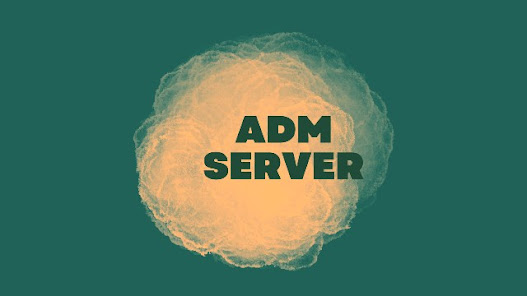In today's rapidly evolving digital landscape, efficient and secure management of network resources is of paramount importance for organizations of all sizes.
Active Directory Management (ADM) servers play a vital role in achieving this goal by providing a centralized and comprehensive platform for managing user identities, access privileges, and network resources.
This article aims to provide a thorough understanding of ADM servers, their significance, and their functionalities within the realm of network administration.
Active Directory Management (ADM) servers refer to the dedicated servers or domain controllers responsible for overseeing and maintaining the AD infrastructure.
These servers facilitate the organization, authentication, and authorization of users and devices within a network environment.
Active Directory Management (ADM) servers play a vital role in achieving this goal by providing a centralized and comprehensive platform for managing user identities, access privileges, and network resources.
This article aims to provide a thorough understanding of ADM servers, their significance, and their functionalities within the realm of network administration.
Introduction to Active Directory Management (ADM) Servers
Active Directory (AD) is a directory service developed by Microsoft that serves as a database for storing and managing information about network resources such as users, computers, groups, and more.Active Directory Management (ADM) servers refer to the dedicated servers or domain controllers responsible for overseeing and maintaining the AD infrastructure.
These servers facilitate the organization, authentication, and authorization of users and devices within a network environment.
Key Functions and Features
1. User and Group Management
ADM servers enable administrators to create, modify, and delete user accounts and groups.They provide a central location for managing user profiles, passwords, and access rights, ensuring streamlined user administration.
2. Authentication and Single Sign-On (SSO)
ADM servers handle user authentication, allowing users to log in with a single set of credentials across various resources within the network.Single Sign-On enhances user experience and reduces the risk of password-related security breaches.
3. Access Control
These servers play a critical role in enforcing access control policies. Administrators can assign specific permissions and access rights to users and groups, ensuring that data and resources are only accessible to authorized personnel.4. Security and Policy Enforcement
ADM servers help enforce security policies and group policies across the network.This ensures consistent security configurations, software installations, and updates, reducing vulnerabilities and enhancing network security.
5. Directory Replication
ADM servers support directory replication, ensuring that changes made on one server are synchronized across all domain controllers.This redundancy enhances fault tolerance and ensures the availability of directory services.
6. Resource Management
Network resources such as printers, shared folders, and applications can be efficiently managed and distributed through ADM servers.This centralization simplifies resource allocation and minimizes administrative overhead.
7. Auditing and Reporting
ADM servers offer auditing capabilities that allow administrators to track user activities, changes to network resources, and security events.Detailed logs and reports aid in compliance monitoring and incident response.
8. Integration with Other Services
ADM servers can be integrated with other Microsoft services such as Exchange Server, SharePoint, and more.This integration streamlines user provisioning and enhances collaboration across the organization.
Setting up and managing ADM servers can be complex, especially for organizations with large and distributed networks.
Benefits of Using ADM Servers
1. Centralized Management
ADM servers provide a unified platform for managing user identities, access controls, and network resources, simplifying administrative tasks.2. Enhanced Security
Effective access controls, group policies, and auditing mechanisms provided by ADM servers contribute to improved network security and data protection.3. Scalability
ADM servers support the growth of an organization by accommodating additional users, devices, and resources within the network.4. Redundancy and High Availability
Directory replication ensures data redundancy, and the availability of multiple ADM servers enhances fault tolerance and business continuity.5. Streamlined Operations
The automation and policy enforcement capabilities of ADM servers reduce manual interventions, leading to efficient network management.Challenges and Considerations
1. ComplexitySetting up and managing ADM servers can be complex, especially for organizations with large and distributed networks.
Adequate planning and expertise are necessary for a successful implementation.
2. Maintenance
Regular maintenance tasks, including updates, backups, and performance optimization, are essential to ensure the continued reliability of ADM servers.
3. Security Risks
While ADM servers enhance security, they can also become a target for malicious actors. Implementing proper security measures is crucial to prevent unauthorized access.
4. Compatibility
Integrating ADM servers with other services or third-party applications may require careful consideration to ensure compatibility and seamless operation.
Conclusion
Active Directory Management (ADM) servers serve as the backbone of network administration, providing essential tools for managing user identities, access controls, and network resources.
With their centralized approach to user and resource management, ADM servers offer organizations the ability to maintain a secure, efficient, and scalable network environment.
While challenges exist, proper planning, implementation, and ongoing maintenance can maximize the benefits of ADM servers and contribute to the overall success of an organization's IT infrastructure.
2. Maintenance
Regular maintenance tasks, including updates, backups, and performance optimization, are essential to ensure the continued reliability of ADM servers.
3. Security Risks
While ADM servers enhance security, they can also become a target for malicious actors. Implementing proper security measures is crucial to prevent unauthorized access.
4. Compatibility
Integrating ADM servers with other services or third-party applications may require careful consideration to ensure compatibility and seamless operation.
Conclusion
Active Directory Management (ADM) servers serve as the backbone of network administration, providing essential tools for managing user identities, access controls, and network resources.
With their centralized approach to user and resource management, ADM servers offer organizations the ability to maintain a secure, efficient, and scalable network environment.
While challenges exist, proper planning, implementation, and ongoing maintenance can maximize the benefits of ADM servers and contribute to the overall success of an organization's IT infrastructure.

